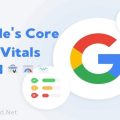Table of Contents
What is On-Page SEO?
On-Page SEO is a search engine marketing strategy to assist search engine spiders to know, what your webpage is about. By optimizing and tweaking features such as Meta title, description, Heading tags, Internal hyperlinks, you can raise the odds of reaching a higher position in search engines.
When it comes to optimizing a website or a blog post, there are two Chief factors :
- On-page optimization
- Off-page optimization
Off-page optimization deals with the optimization of signs that are out of your website. For instance Backlinks.
Today’s article will concentrate on on-page optimization, and now I will be sharing a lot of great on-page search engine optimization techniques you need to execute while focusing on optimizing your blog posts.
Best On-Page SEO Tools:
There are a couple popular On-page SEO tools out there that can allow you to examine the top 10 results for your question.
A few of those tools may also compare your webpage with the very best pages and provide you data-backed-up recommendations for enhancing your on-page SEO.
Here is the list of tools:
- SEMRush SEO writing assistant
- Frase (AI-based tool)
Any one of those On-page search engine optimization tools will make certain you are utilizing the Search data to maximize your article to get modern on-page search engine optimization requirements. They are user-friendly and might be employed by you or your group of writers.
This is something I’ve been widely using and that is the way you have found my website from Google search.
- On-site Search Engine Optimization Denotes the optimization of the Whole website with matters like Sitemap and placing permalink structures.
- On-page SEO optimizes articles to get a target keyword within one blog post. Including using appropriate headings, appropriate keyword positioning, ensuring content quality, and paying attention to numerous different facets.
Why Your Blog Need On-Page SEO Optimization?
Well, there is probably a lot of reasons, however in case you aren’t paying attention to SEO, then that is probably the biggest reason.
So if we perform SEO-optimization of a post we follow a particular set of proven procedures to position it higher on search engine optimization.
Now, Google does not just consider on-page search engine optimization scores when standing an article. It also takes into account many different factors such as social networking signs (shares, enjoys, tweets, follows, etc.), backlinks, domain authority, and several other off-page metrics.
Our aim with search-engine SEO would be to optimize an article in a natural, but smart manner, so that search engines can quickly pick out the target keyword and deliver our website targeted visitors.
A whole lot has changed over the last several years. While off-page SEO is vital, on-page SEO shouldn’t be ignored.
In particular, the golden rule applies:
1 thing that I would advise that you start doing is incorporating movies into your website posts.
Videos are not only going to boost the number of press in your own posts, but it will also create your posts that considerably more enlightening and content-rich.
You will see a good example of what I am referring to in a moment.
5 On-Page SEO Guide for Your Blog (2021 Edition)
Before I get into the details, let me share some non-technical tips that you can use today.
- Enhance the user experience
- You should ensure that your website is mobile-friendly and that broken links are minimized.
- You want search engine visitors to spend time on your website. Your ranking will also drop quickly if they quickly hit the back button.
- Make sure that your website maintains a high standard of professionalism.
- Proper copywriting techniques will make people stay.
- Good content is essential.
- To make your message more memorable, you can use benefit-driven subheadings.
- Avoid fluff.
- Get feedback to improve.
Let me now share the 10 key factors of on-page optimization that you need to keep in mind when optimizing blog posts.
1. Meta Title
This is the most important factor in on-page SEO. This is because people will click on titles that are more appealing and optimized. The more people click on your post, the higher it ranks.
It is best to place the keyword or Keyword phrase at the beginning of your title (H1) tag. If that’s impossible, ensure it’s at the least in the title.
It is also a bad idea to repeat the same keyword multiple times in the title tag if you believe it will increase the article’s rank. It will not. It can actually harm your ranking. It is a bad idea.
Keep the title at least 5 lines longUnter65 characters
2. Post Permalink Structure
It is important to ensure that your URL is correctly displayed on the page. You should again use your target keyword in the URL. Avoid using special characters, symbols brackets, brackets and commas. Within the URL itself.
To distinguish strings within your URL structure, use dashes. These are known as “pretty” URLs and are supported in most web browsers.
Here’s an example of a good URL:
- https://www.domain.com/post_title-separated–with-dashes
3. Use Proper Heading Tags
Heading tags are used to highlight important points, including sub-headings and headings.
The title tag in WordPress is H1. There are no additional H1 tags required for an article. One suffices. Stick to H2 or H3 tags for section breaks
Google’s algorithm won’t appreciate too many H2 and H3 tags.
4. Use Table of Content
It has become more important to write detailed articles. Some articles can be as long as 5000 words.
A table of content can help users navigate long articles more easily. It also allows you to get jump links in Google searches.
5. Keyword Density
The keyword density should be kept at a reasonable level1.5% with a mixture of LSI keyword.Matt Cutts, however, explains that there is no magic formula. To help search engines understand your content better, I recommend using semantically related words.
Your main keyword should be used in both the first and last paragraphs. Use it wherever it makes sense.








